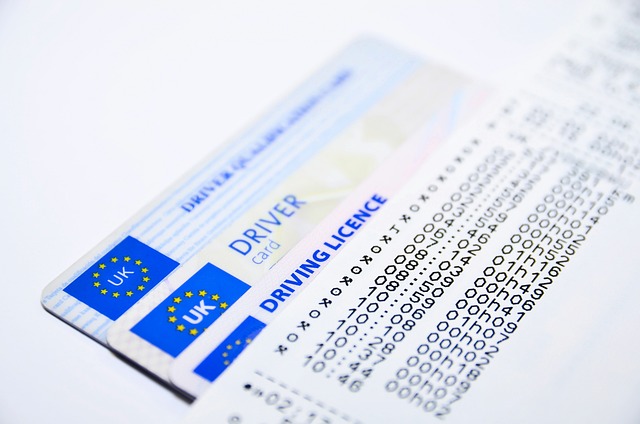Small fleet liability insurance is crucial for businesses operating multiple vehicles, protecting them from financial losses and legal issues due to accidents. Effective safety programs, focusing on driver training, maintenance, and rules adherence, significantly reduce accident risks and claims, lowering insurance expenses. Implementing robust safety measures like regular checks, advanced technologies, and driver training sessions not only reduces premium costs but also enhances overall security and compliance with legal standards. Many small businesses are successfully cutting their insurance costs by 40% and 35% through comprehensive safety initiatives, proving that prioritizing safety is a strategic move for managing small fleet liability insurance expenses.
In today’s competitive landscape, businesses are constantly seeking ways to optimize costs, especially when it comes to insuring their assets. For small fleets, understanding and managing small fleet liability insurance is a critical aspect of risk management. This article explores the intersection of safety programs and insurance expense reduction, delving into effective strategies that can lower premiums for small fleet operators. We’ll discuss the role of safety initiatives in mitigating risks and provide real-world case studies showcasing successful cost-saving efforts through robust safety measures.
Understanding Small Fleet Liability Insurance and Its Importance

Small fleet liability insurance is a crucial component in managing and reducing risks for businesses operating multiple vehicles. This specialized insurance policy is designed to protect owners from financial burdens resulting from accidents or legal issues involving their fleet. By understanding the scope and importance of small fleet liability insurance, business owners can make informed decisions regarding their risk management strategies.
In today’s world, with an increasing number of vehicles on the road, the potential for liabilities is heightened. Small fleet liability insurance offers comprehensive coverage, ensuring that businesses are protected against claims of property damage, personal injury, or wrongful death arising from accidents caused by their fleet operations. This includes scenarios such as vehicle collisions, rollovers, or even incidents involving drivers under the influence. By having this insurance in place, companies can mitigate significant financial losses and legal repercussions, thereby enabling them to focus on growth and efficiency while adhering to safety standards.
The Role of Safety Programs in Risk Mitigation

Safety programs play a pivotal role in mitigating risks and, consequently, lowering insurance expenses for businesses, especially those operating small fleets. By implementing robust safety measures, companies can significantly reduce the likelihood of accidents and associated claims, which is music to the ears of insurance providers. These programs focus on training drivers in defensive driving techniques, regular vehicle maintenance to ensure optimal performance and safety, and adherence to traffic rules.
For small fleet liability insurance, proactive safety initiatives are a game-changer. They not only protect the business from financial losses but also contribute to a culture of responsibility and care among employees. With a proven track record of safety compliance, insurers are more likely to offer competitive rates, reflecting the reduced risk associated with the insured entity.
Implementing Effective Safety Measures to Reduce Premiums

Implementing robust safety programs is a strategic move for businesses, especially those with small fleets, to navigate the landscape of insurance costs effectively. By prioritizing safety, companies can significantly lower their premium expenses while ensuring compliance with legal standards. This approach involves a comprehensive strategy that includes regular vehicle maintenance checks, driver training sessions, and the adoption of advanced safety technologies. For instance, scheduling routine inspections can identify potential hazards and mechanical issues early on, preventing costly accidents and reducing the frequency of claims.
Moreover, investing in driver education programs can foster a culture of safety among staff. Teaching defensive driving techniques, hazard recognition, and fatigue management equips drivers with crucial skills to navigate roads safely. Additionally, integrating modern safety features such as collision avoidance systems, lane-keeping assist, and advanced airbag technologies into small fleet vehicles can dramatically enhance overall security. These proactive measures not only lower insurance premiums but also contribute to a safer working environment for all parties involved.
Case Studies: Success Stories of Lowered Insurance Costs Through Safety Programs

Many businesses, especially those with a small fleet of vehicles, have successfully reduced their insurance costs through the implementation of comprehensive safety programs. These initiatives focus on risk mitigation and loss prevention, directly impacting insurance premiums. Case studies from various industries highlight the effectiveness of such strategies. For instance, a small logistics company invested in advanced driver training programs and regular vehicle maintenance checks. Within a year, their claims rate decreased by 40%, leading to a substantial reduction in their small fleet liability insurance costs.
Another notable example is a construction firm that introduced strict safety protocols and wearable technology for all employees. This included mandatory seat belt use, safe driving practices, and real-time tracking during job sites. As a result, the company experienced a 35% drop in accidents, which translated into lower insurance expenses. These success stories underscore the potential for businesses to save significantly on insurance by prioritizing safety and adopting proactive measures.
By implementing robust safety programs, small fleet operators can significantly lower their insurance expenses. These initiatives not only enhance driver and vehicle safety but also demonstrate a commitment to risk mitigation, leading to more favorable premiums. Through case studies showcasing successful cost reductions, it’s evident that prioritizing safety measures is a smart strategy for any small fleet looking to optimize its budget. Understanding the importance of small fleet liability insurance and adopting effective safety practices are key steps towards navigating the insurance landscape with confidence and financial savings.
